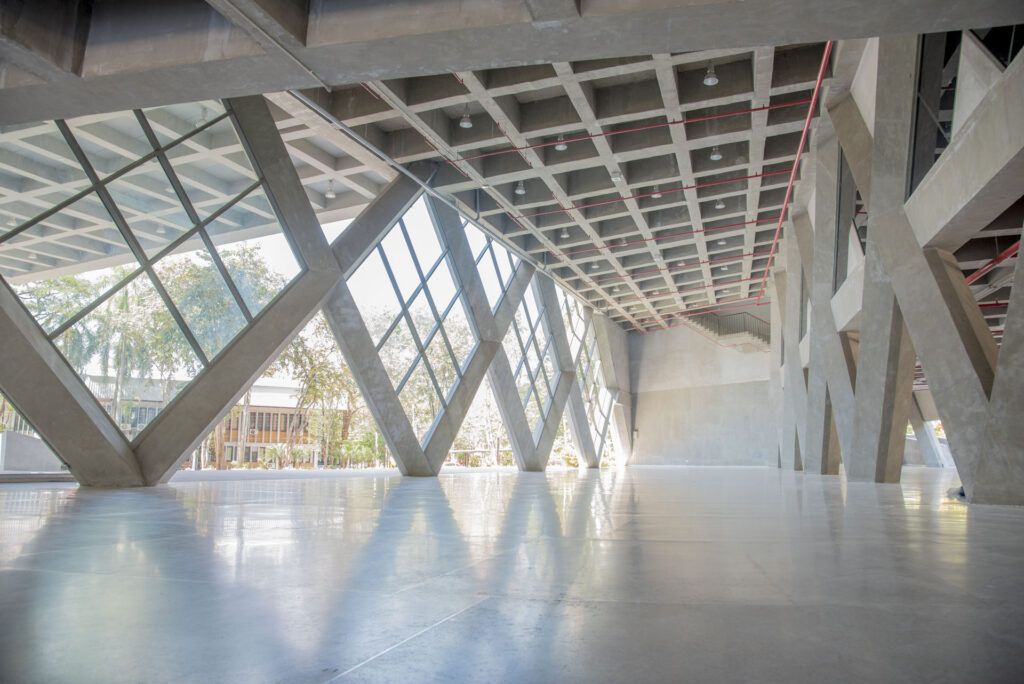Crazing in Commercial Floors
In the bustling commercial hubs of Reno, style and artistic flare often merge with function. Finding a unique style that sets a business apart from competitors is a constant goal. One decorative technique actually takes advantage of a phenomena that is typically considered a concrete fault — the spidery lines of crazing.
What Is Concrete Crazing?
Crazing is a common circumstance with concrete floors. It’s characterized by an irregular pattern of fine cracks on the concrete surface, often resembling a spider web or the cracked pottery glaze. These non-structural micro-cracks are usually considered a blemish, rather than a sign of weakness. In commercial settings, where large concrete floors are often finished with power troweling, crazing is a common phenomenon. It results from the surface layer and the underlying concrete drying at different rates due to differences in moisture content.
It’s crucial to distinguish between crazing and more serious structural cracks. While crazing is superficial, other types of cracks can indicate deeper issues affecting the floor’s integrity and performance. Crazing, fortunately, does not impact the structural or serviceability aspects of concrete floors, making it more of an artistic feature than a defect. In fact, it can be reduced with grinding or covered with a thin layer of urethane concrete when preparing a floor for epoxy coatings. But crazing also offers floors a chance to shine by emulating a time-honored Japanese restoration practice.
The Kintsugi Perspective
Kintsugi, which means “golden joinery,” is the art of repairing broken pottery using lacquer mixed with powdered gold, silver, or platinum. In effect, the pieces are joined together again via the use of gold. This philosophy celebrates each artifact’s unique history by emphasizing its fractures and breaks instead of disguising them. When we apply the kintsugi mindset to crazing, these fine lines become a symbol of the floor’s history and character, narrating the floor’s creation and the effects of physical laws on the curing concrete.
In commercial environments, where functionality meets aesthetics, embracing crazing can add a unique dimension to the space. Just as kintsugi transforms broken pottery into a prized possession, accepting crazing as an inherent characteristic of concrete can offer a unique aesthetic appeal. This approach reflects an appreciation for the natural aging process and the beauty of imperfection.
Treatment of Crazing
While crazing is not a structural concern, its appearance can be managed. Surface coatings or sealants can be applied for a more uniform look, like the way kintsugi enhances the cracks in pottery. These treatments, while not eradicating crazing, add to the floor’s visual narrative, blending practicality with artistic expression. But the crazing in a concrete floor might be so superficial that it’s reduced or even removed in the preparation process. Where the crazing has enough depth, Nevada Custom Coatings can improve the unique look of these spidery lines with concrete polishing and metallic epoxies, allowing you and your customers to benefit from the exclusive look of kintsugi.
A New Perception of Concrete Floors
At Nevada Custom Coatings, we see the beauty in the imperfections of concrete, much like the art of kintsugi. We can help commercial clients in Reno to embrace this perspective, viewing crazing not as a flaw, but as an opportunity to celebrate the uniqueness of their space. Whether this look is right for your business or if you have a different vision in mind, Nevada Custom Coatings is ready and able to help you realize the goals you have for your concrete floors! Give our office a call, or schedule a free onsite consultation using our website to start a golden journey.
